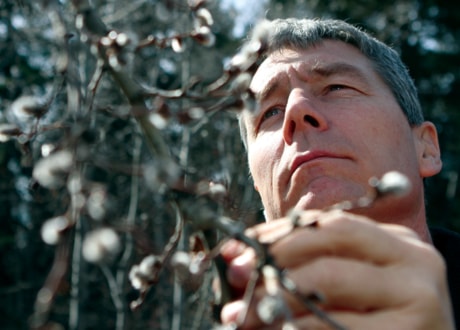From the Western blue flag to the rattlesnake plantain, Red Deer resident Tony Blake has tracked down plants from the exotic to the ordinary, as part of a hobby that has him travelling around his own community and the province each summer.
Each year, Blake takes part in Botany Alberta, the Alberta Native Plant Council’s annual plant survey, in partnership with the Nature Conservancy of Canada and Adopt-a-Plant Alberta.
He is part of a group of 20 to 30 volunteers who bring backpacks full of plant books, lists of species found in the province and magnifiers to have a better look at flowers, leaves and stems.
The idea is to go to an area of the province and collect baseline data on what plants exist on a certain piece of property.
For the Nature Conservancy of Canada, which holds land all over the country to be protected, it can help show the value of protecting the property by knowing what rare and endangered species exist on the location.
It’s also valuable to know the common species that are representative of that specific geographical region that exist there, as well as the weeds or invasive plant species that are on the property.
Blake first joined the Red Deer River Naturalists around a decade ago when his son Adam was in high school and his son started sitting on the organization’s board.
Eventually when his son went off to university and then on to a master’s degree, Blake took his place on the board.
Blake said early on he remembers going to Rumsey to explore the largest intact piece of native Aspen parkland left.
All of the birders would have their binoculars to their eyes scanning the trees and moving about, but then he saw the people interested in plants down, low to the ground, examining plants with tiny magnifiers and he was intrigued.
“Plants are a whole lot easier to study because they don’t fly away when you put your binoculars on,” Blake said.
He first identified wildflowers, but has now moved on to more challenging plants. Blake has been involved in “botanizing”, as the plant lovers call searching for different species, for around a decade.
“You lose this appreciation for big, bold, beautiful and flashy after a while. One of the things I was excited about last year when I was walking around the Kerry Wood Nature Centre, along the escarpment to the south. There on very mossy ground there was a lessor rattlesnake plantain,” he said. The tiny plant is only a few centimetres high and fuzzy. “It’s a very ordinary looking plant, but it grabs your attention because it is different. It’s a very satisfying thing when you find something. It’s these things that don’t sort of fit that grab your attention.”
As a retired conductor for the CPR he now has more time to spend on his hobby. He takes pictures of plants and collects them the way someone might collect stamps. Sometimes identifying a plant can be relatively simple, especially if it’s in bloom because most are classified by their flowers, but other times it will take some guesswork or help from friends to figure out the exact plant that it is, which is why the photographs he takes are so useful.
On a trip to Milk River Ridge in 2007 he got to see a patch of Western blue flag, which is a native iris at risk. The group of people tracked it down with GPS co-ordinates they had been given. They were walking along a cow pasture and didn’t see anything, until Blake said there was this blueish wisp of colour.
“It looked like a piece of Kleenex in the breeze,” he said. As they got closer they saw there were more and more of the plants around.
Even before Blake goes on this year’s Botany Alberta trip to Cypress Hills he has already started to research the climate and species of plants that he might expect to find. Blake enjoys botanizing because there is so much to learn.
“It’s this whole extra level of detail that I wasn’t aware of,” Blake said. “It is literally a natural heritage. Once it’s gone it’s gone forever before we’ve even had a chance to study it and appreciate it.”
To find out more go to www.conservationvolunteers.ca.
sobrien@www.reddeeradvocate.com
